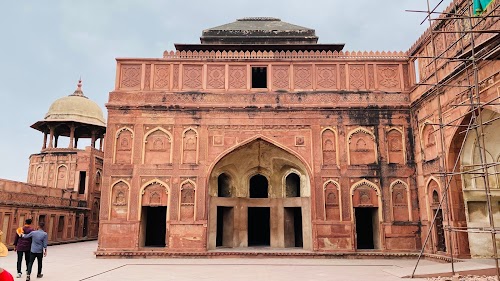
Agra Fort
Agra, India
- Admire Khas Mahal
- Capture stunning photographs
- Explore Mughal architecture
- Learn about Mughal history
- See Diwan-i-Aam
- View Taj Mahal from fort
- Visit Jahangiri Mahal
- Walk along ramparts
Known for:
Description:
Agra Fort, a UNESCO World Heritage site, is a majestic red sandstone fort located in Agra, India. It showcases a blend of architectural styles, primarily Mughal and Hindu. Within its massive walls lie palaces, audience halls, mosques, and gardens, each echoing the grandeur of the Mughal empire. The Jahangiri Mahal, built for Akbar's Rajput wife, exhibits intricate carvings and spacious courtyards. The Khas Mahal, with its delicate marble work and stunning views of the Taj Mahal, served as Shah Jahan's private residence. The Diwan-i-Aam and Diwan-i-Khas were used for public and private audiences respectively. The fort's strategic location on the banks of the Yamuna River further enhances its historical significance.
History:
Agra Fort, initially a brick fort held by the Lodhi dynasty, was captured by Babur in 1526, marking the beginning of Mughal rule. Akbar significantly rebuilt the fort using red sandstone, adding palaces and other structures. Subsequent emperors, including Jahangir and Shah Jahan, further embellished it with marble and precious stones. Shah Jahan, ironically, was later imprisoned in the fort by his son Aurangzeb, spending his last years gazing at the Taj Mahal. The fort served as the main residence of the Mughal emperors until 1638 when the capital shifted to Delhi. It later fell to the Marathas and then the British before becoming a prominent tourist destination.